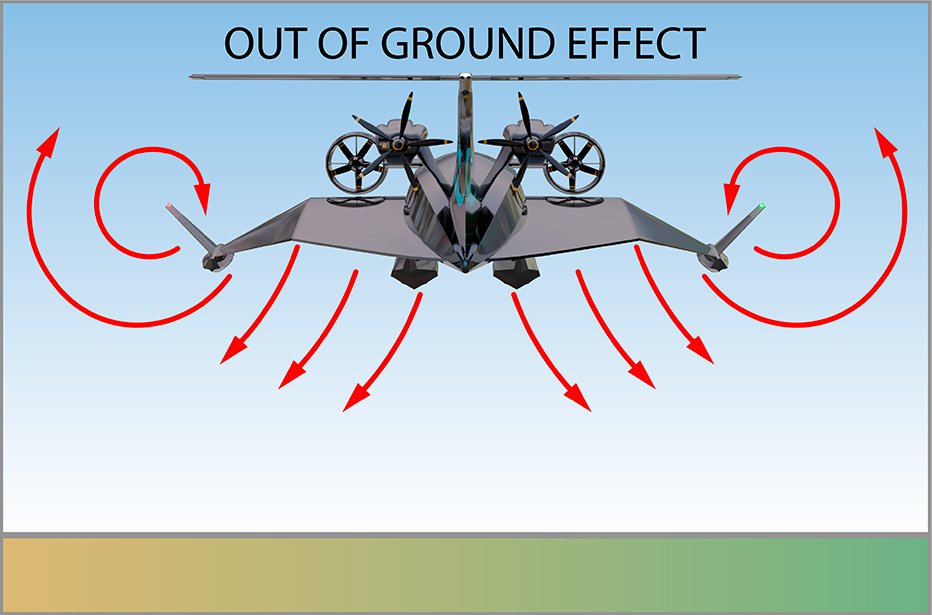AERODYNAMIC PRINCIPLES OF GROUND EFFECT
Remember that gliding feeling during the landing of a flight? That's ground effect.
Ground effect is an aerodynamic principle experienced when flying close to the Earth’s surface—either over ground or water. Ground effect occurs when operating within a distance of the wingspan from the surface. This results in reduced drag and increased lift, drastically improving energy efficiency and enabling heavier payloads.
Flying close to the surface creates a cushion of air under the wing, generated by downwash from the wing, increasing lift.
When a wing is flown close to the ground, the drag-inducing wingtip vortices are interrupted by the ground, preventing them from forming effectively due to the obstruction. The result is lower induced drag, leading to increased speed and lift for the aircraft.
WHY ARE WE EXPLOITING GROUND EFFECT?
During the Cold War, the USSR made significant strides in ground-effect technology, unveiling awe-inspiring creations such as the Caspian Sea Monster—a gigantic WIG (Wing-in Ground-Effect) craft capable of skimming above the water surface at extraordinary speeds. While the Soviet Union achieved notable advancements in the field, the technology required complex engineering and faced numerous technical hurdles. With the collapse of the USSR, WIG tech was put on the back burner until the arrival of Flying Ships.














